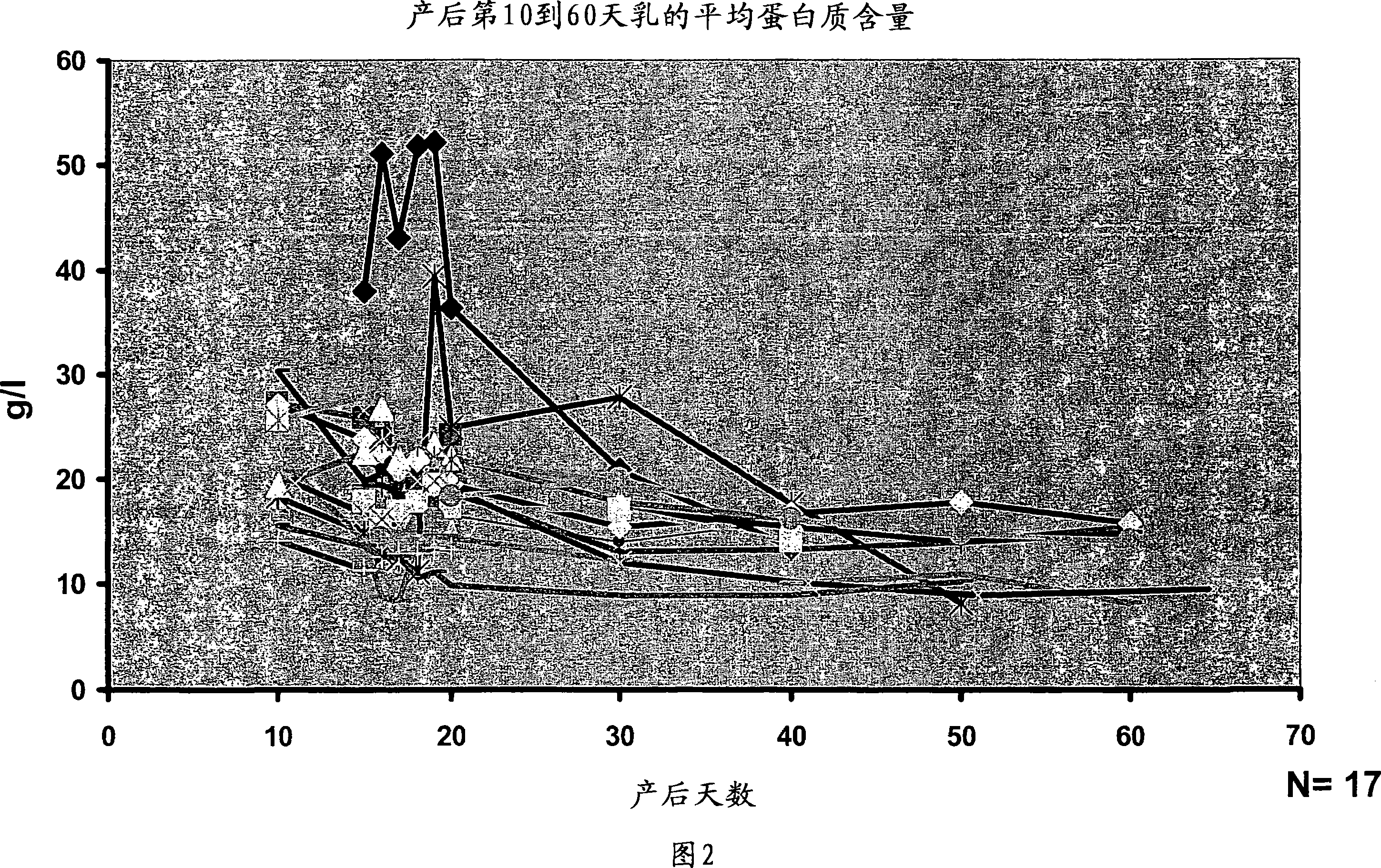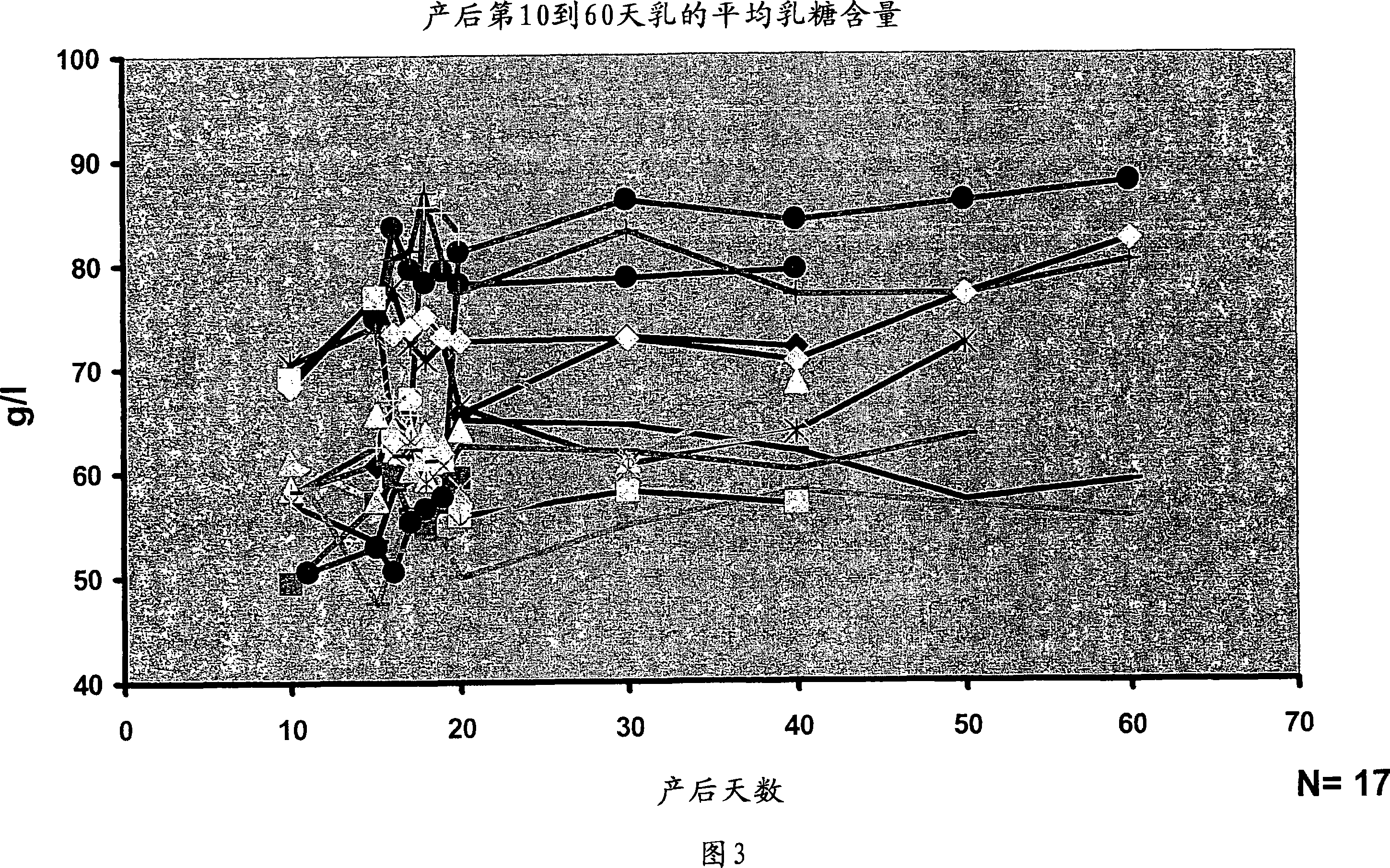Method for analysing and treating human milk and system therefore
A nutrition analysis and breast milk technology, applied in the field of analyzing and processing human milk to be fed to infants, can solve the problems of supplying nutrients and immune components, and achieve the effect of improving nutrition
- Summary
- Abstract
- Description
- Claims
- Application Information
AI Technical Summary
Problems solved by technology
Method used
Image
Examples
Embodiment 1
[0077]A liquid sample (100ml) of the human milk sample was collected. Human milk was collected from mothers of preterm infants or from human milk donors at >10 and <90 days postpartum, respectively. Milk samples were collected from milk expressed from the udder over the course of a day. The basic composition of this milk can be summarized as follows: 3.8% fat, 0.8% protein and 5.2% carbohydrates. Determine the actual energy content of the milk samples. The non-aqueous part of the milk (cream fat) was separated from the water part by centrifugation (10000rpm, 4°C) and the top layer (cream fat) was carefully removed and a known volume was added to 140ml of the mother's own milk to increase the energy in her milk levels up to the recommended levels for premature infants of a specific weight and age.
[0078] Premature babies can be observed to grow and develop similarly to what happens in the womb.
[0079] In addition, pasteurization and standard hospital-grade bacterial tes...
Embodiment 2
[0081] A liquid sample (150ml) of the human milk sample was collected. Human milk was collected from mothers of infants with special needs (preterm infants or sick full-term infants) at >10 and <90 days postpartum, respectively. Milk samples were collected from milk expressed from the udder over the course of a day. The basic composition of this milk can be summarized as follows: 3.8% fat, 0.8% protein and 5.2% carbohydrates. Determining the concentration of protein in milk samples. The non-aqueous part (cream) of the milk was separated from the water part by centrifugation (10000 rpm, 4°C) and the top layer (cream) was carefully removed. The aqueous layer was then concentrated by passing it through a milk protein impermeable filter. The filters used were 30 Kd Omega ultrafiltration tangential flow membranes from Pall. Filtration was performed at low temperature, ie 19°C. Concentrate the water portion by performing two 9-hour run trials on the final protocol. The average...
Embodiment 3
[0085] A liquid sample (500ml) of the human milk sample was collected. Human milk was collected from human milk donors who were more than 90 days postpartum. Milk samples were taken from milk expressed from the udder over the course of several days and stored frozen. The basic composition of this milk can be summarized as follows: 3.8% fat, 0.8% protein and 5.2% carbohydrates. Determination of protein concentration in milk samples. The non-aqueous part (cream) of the milk was separated from the water part by centrifugation (10000 rpm, 4°C) and the top layer (cream) was carefully removed. The aqueous layer is then concentrated by passing it through a filter impermeable to milk proteins. The same type of filter and temperature as in Example 2 are preferably used. After the water fraction was concentrated 5 times in the same manner as described in Example 2, the concentrated solution was centrifuged at a high speed, ie, 210,000 rpm, at 4°C to precipitate the casein fraction. ...
PUM
 Login to View More
Login to View More Abstract
Description
Claims
Application Information
 Login to View More
Login to View More - R&D
- Intellectual Property
- Life Sciences
- Materials
- Tech Scout
- Unparalleled Data Quality
- Higher Quality Content
- 60% Fewer Hallucinations
Browse by: Latest US Patents, China's latest patents, Technical Efficacy Thesaurus, Application Domain, Technology Topic, Popular Technical Reports.
© 2025 PatSnap. All rights reserved.Legal|Privacy policy|Modern Slavery Act Transparency Statement|Sitemap|About US| Contact US: help@patsnap.com



